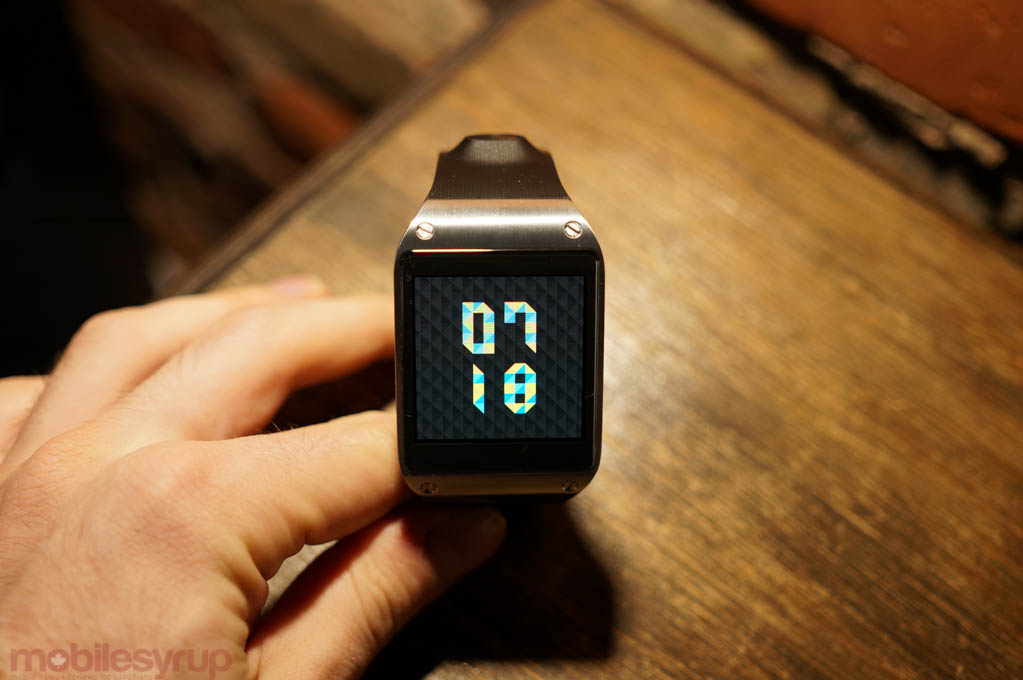
It used to be that I annoyed my girlfriend by putting my phone on the table and furtively glancing at it during dinner. No more. These days, the phone stays in my pocket and instead I furtively glance at my Pebble. Same notifications, same intention, different device.
This is the problem I see with the looming wearable boom. Whereas smartphones legitimately added function to our lives in Lilliputian form, combining several — even dozens — of utilities into one pocketable gadget, the “wearable” in all its current forms has yet to improve upon, or successfully obfuscate, the function of a smartphone.
As proven by the rabid early adopters of products like Pebble or Google Glass, there is a demand for this technology — though let’s leave behind for a moment that both smart watches and eyewear are currently dependant on smartphones for the majority of their “intelligence” — but after using both extensively, I’ve yet to find myself in a situation where either would reduce my dependance on that ever-present pocket gadget.
What intrigues me most about wearable technology is its ability to more effectively integrate with the body. The current smartphone will for the near future be guided by its static, intractable design — thin and light, yes, but boxy — whereas a sensor sewn into a jacket will be able to more accurately judge wind speed, temperature, altitude. But even these tenets are being subsumed by the smartphone: Samsung added a barometer, altimeter and humidity gauge to its latest flagship; Apple added a chip to the iPhone 5s dedicated to offloading sensor-based number crunching. There is no doubt that the data derived from such sensors is important — nay, imperative — to the future of the technology-centred self, but the smartphone is still the focal point of this expansion.
Products that interest me most, like Thalmic Labs’ Myo, perform functions largely inimitable by the smartphone in its current form. The average smartphone shape and design limits its gesture usage to the accelerometer and compass, broadly suitable for navigation and gaming, but unreliable when finer motion needs to be translated. Our fingers, our muscles, our tendons and joints — these are just waiting for the miracles of technology to turn them into something expansive. Microsoft’s Kinect and its near-competitor, Leap Motion, are already becoming normalized aspects of our lives, but neither fit in our pockets.
We’re almost there, too: I currently have a Belkin WeMo Light Switch that communicates with my iPhone via IFTTT. As I enter a sandboxed area near my apartment, my iPhone sends a signal through IFTTT to tell my Light Switch to engage. It’s on when I walk in the door and, if I forgot to switch it off before leaving, the job will be done without my input. But I want to go further: I want to be able to raise or lower my hand to adjust the light’s strength, for example.
The Internet of Things, and the Connected Home (note the capitalization) is separate from Wearable Technology. My phone is still, and will continue to be for a long, long time, the centre of my digital life. Even with a tablet and a laptop next to me, I often turn to an iPhone or Android (or, occasionally, Windows Phone). It is familiar and secure, tuned to my exact needs. It has every app, not just most apps, that I use. It makes calls and routes texts, for the odd time I need them, and it disappears into my pocket when I’m finished. The phone is the ultimate wearable, and despite the convenience of Pebble or the quivering newness of Google Glass, neither truly interest me as widely-adopted consumer devices.
My colleague, Tom Emrich, is exactly the type of early adopter who champions wearables as being integral to the next wave of computing. I posit that, far from rejecting them entirely, we take cautious and measured steps towards adoption. At this point, most wearables are great mimickers of more useful products, better suited to duplicate notifications than stand alone. These are early days, and some exceptions certainly exist, but I’m rightfully weary of the rush to prove that wearables are necessary, or even desirable, to the average tech consumer. Companies are rushing to do just that — shoehorn into the market solutions to problems that don’t exist — evinced most effectively by the Samsung Galaxy Gear, arguably this year’s most publicized consumer wearable. Samsung should have held on to the Gear for at least another year, working out the kinks and improving device compatibility, before releasing it.
There is nothing wrong with a bit of experimentation, and companies with vision have certainly improved the prospects of early-to-market hardware — Pebble is the industry’s best example — but I live and die by my smartphone, and I don’t foresee a reason, now or in 12 months, to change that.
MobileSyrup may earn a commission from purchases made via our links, which helps fund the journalism we provide free on our website. These links do not influence our editorial content. Support us here.


